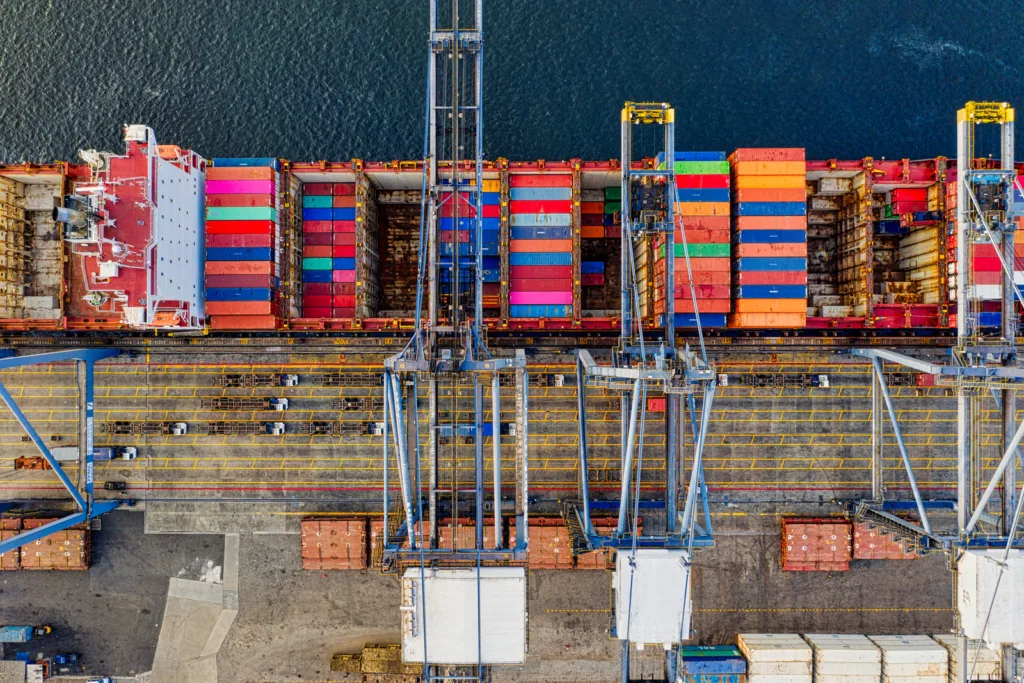Logistics optimisation helps businesses improve the efficiency of their supply chain by identifying and eliminating inefficiencies. It can involve a wide range of activities, including analysing data on supply chain performance, identifying bottlenecks, and implementing improvements.
How does logistics optimisation work at a high level?
Our work in logistics optimisation typically sees us bringing in a team of our experts to analyse your supply chain and identify opportunities for improvement. This broadly involves gathering data on your current processes, analysing that data to identify inefficiencies, and then developing and implementing a plan to address those inefficiencies.
Why logistics optimisation should matter to your organisation.
There are several reasons why logistics optimisation should matter to your business:
- Increased efficiency: By streamlining your supply chain, you can increase efficiency, which can lead to cost savings and increased profitability.
- Improved customer experience: Optimising your supply chain can help you deliver a better customer experience, which can lead to increased customer satisfaction and loyalty.
- Enhanced competitiveness: By operating more efficiently, you can gain a competitive advantage over your competitors.
When is the right time to optimise your logistics and supply chain?
There is no one-size-fits-all answer to when the right time is to optimise your logistics and supply chain. In most cases, it’s always a good time.
However, there are a few signs that your organisation might be needing assistance urgently:
- You are experiencing bottlenecks or delays in your supply chain
- You are seeing an increase in errors or mistakes
- You are facing increasing pressure to reduce costs
- You are experiencing declining customer satisfaction
How does data analytics help with logistics?
Data analytics can help with logistics in several ways:
- Identifying inefficiencies: By analysing data on your supply chain, you can identify bottlenecks, delays, and other inefficiencies that are impacting your efficiency and profitability.
- Measuring performance: Data analytics can help you measure the performance of your logistics processes, allowing you to track progress and identify areas for improvement.
- Prioritising improvements: Data analytics can help you prioritise improvements by identifying the areas that will have the greatest impact on your efficiency and profitability.
- Identifying trends and patterns: Data analytics can help you identify trends and patterns in your logistics processes, allowing you to make data-driven decisions about how to optimise them.
- Monitoring and measuring the impact of improvements: By analysing data before and after logistics optimisation efforts, you can measure the impact of your improvements and identify areas for further optimisation.
Practical examples.
Here are a few practical examples of targeted logistics and supply chain optimisations:
- Automating manual tasks: Automating manual tasks can help reduce errors and improve efficiency. For example, you might use automation to handle tasks such as scheduling deliveries, tracking inventory, or processing orders.
- Optimising routes and schedules: Optimising routes and schedules can help you reduce costs and improve efficiency. For example, you might use data analytics to identify the most efficient routes for deliveries or to optimise production schedules to better meet demand.
- Consolidating shipments: Consolidating shipments can help you reduce costs and improve efficiency by reducing the number of separate shipments you need to manage.
- Reducing lead times: Reducing lead times can help you improve efficiency and reduce costs by reducing the amount of time you spend waiting for deliveries or processing orders.
- Improving inventory management: Improving inventory management can help you reduce costs and improve efficiency by reducing excess inventory and improving stock levels. For example, you might use data analytics to optimise your inventory levels based on trends in customer demand.
Logistics optimisation is a critical component of business success. By streamlining your supply chain and eliminating inefficiencies, you can increase efficiency, reduce costs, and improve profitability. Data analytics can be a powerful tool for logistics optimisation, allowing you to identify opportunities for improvement and measure the impact of your efforts. Whether you’re in manufacturing, healthcare, retail, or another industry, logistics optimisation can help your organisation operate more efficiently and effectively.
So why use an inefficient supply chain?
We’ll help you set up your supply chain and logistics processes to enable your sustained growth into the future.
